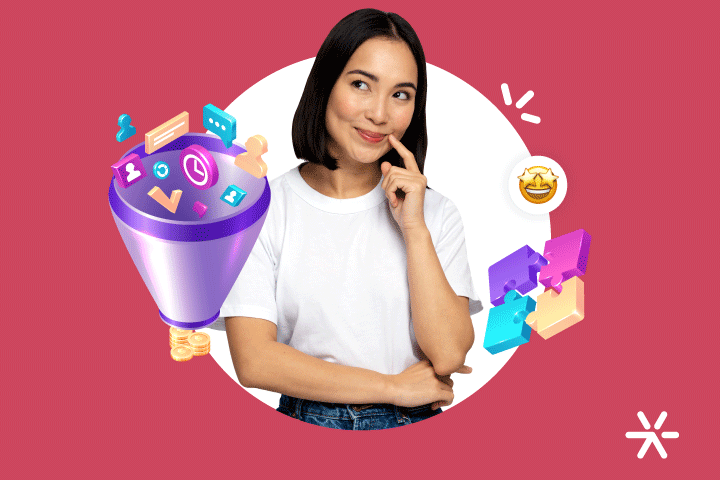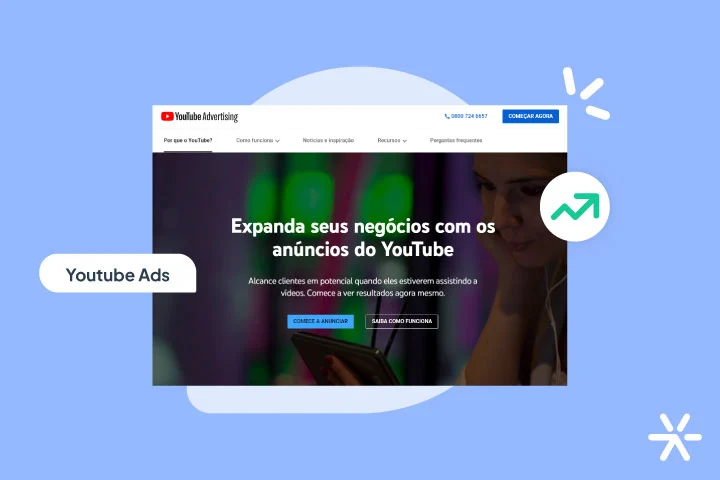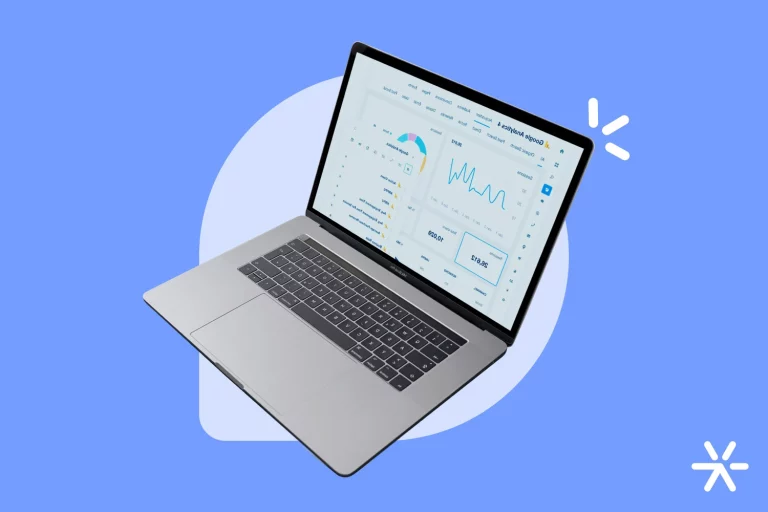What is a Sales Funnel? Stages, Methods, and 9 Tools
The sales funnel is an essential tool for anyone working with digital marketing and online sales.
In fact, it’s more than just a tool. Unlike something you can touch and apply to a problem, it is its own methodology – an organizational framework for sales.
But what is the sales funnel? What are the practical, day-to-day efforts of this methodology?
That’s what we’ll discuss today. Throughout our conversation, we’ll also talk about the buying journey, the digital marketing funnel, and introduce you to 9 tools to help you build yours.
Starting:
What is the Sales Funnel?
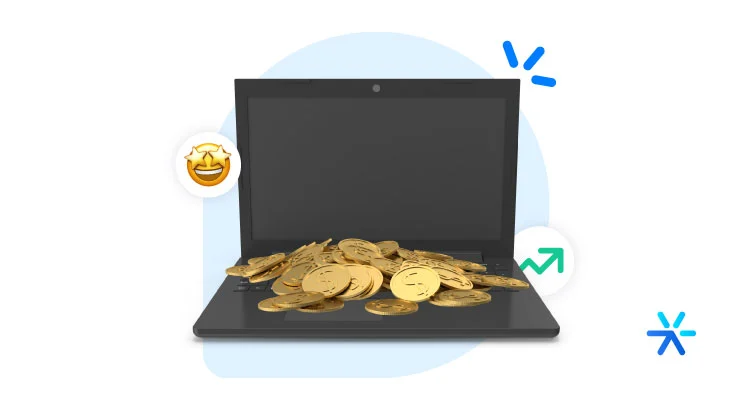
The sales funnel is a structure created to segment the commercial efforts in a company that uses advanced marketing techniques.
The sales funnel consists of the stages following the marketing funnel, which we will explain below.
When the marketing funnel delivers a marketing-qualified lead, the sales funnel begins its work.
But this does not mean, in any way, that the sales funnel is solely focused on closing deals. In fact, marketing and sales work together from the early stages to generate, nurture, and qualify leads.
The sales funnel is more related to the efforts made to close the sale.
For example, see the Leadster sales funnel:
Notice how, even though we are discussing in simpler terms, the sales funnel can become as complex as you want.
And this is one of the simplest examples. See the evolution of the sales funnel from SiriusDecisions:
You can see all these sales funnels discussed in our main article about the marketing funnel. It’s definitely worth reading.
The complexity of your sales funnel will, of course, depend on the complexity of your product and your negotiation process.
How does a sales funnel work in practice?
What is the role of the sales funnel?
The role of the sales funnel is to accelerate the transformation of marketing-qualified leads into customers.
And then, through post-sales work (which itself is a new funnel 😅), to delight the customer so that they recommend your brand and continue buying from you.
The fact is that the work of the sales funnel involves using sales techniques to continue developing and qualifying the lead, generating a sales-qualified lead – also known as SQL.
At the sales funnel stage, the sales team will need to employ some techniques. Some key ones include:
– Bottom-of-funnel email marketing strategies;
– Meetings to present your products;
– Free consultations to assess demands;
– Calls and messages on social media;
– Free product demonstrations;
Among various others depending on your strategy. See this image for an example of how these actions interact at different stages of the sales funnel:
Source: Pipedrive
What is an SQL?
An SQL is a lead qualification level, indicating that the lead is close to making a purchase.
The marketing team will work on all the upper stages of the marketing funnel – the top and middle of the funnel – generating an MQL.
After that, the sales team will work to convert this MQL into a sales-qualified lead – also known as an Opportunity.
An SQL is a lead that, in addition to having been qualified with basic and demographic information, has had direct contact with the sales team and has shown positive intent.
All the strategies mentioned above – part of the work of the sales funnel – when applied correctly will generate an SQL, the highest level of lead qualification.
What is the Difference Between the Sales Funnel and the Marketing Funnel?
The marketing funnel is the entire strategy, including the sales funnel as part of its concept. While the sales funnel is concerned with commercial strategies and techniques, the marketing funnel sets strategies to guide the customer from the first contact to the completion of the sale.
The strategies of the sales funnel – also known as the sales pipeline – start from what the image shows as the bottom of the funnel.
But this is a very interesting topic to discuss, if you’ll allow me a digression.
You will find articles on the internet that, like this one, treat the sales funnel as a technique separate from the marketing funnel, but you will also find others saying that they are all part of the same strategy and concept.
The point is that the sales funnel deals with the stages that the sales team specializes in.
But note: this doesn’t mean that there aren’t points where the sales team and the marketing team don’t interact; on the contrary.
Revisiting basic math, we can say that the sales funnel is contained within the marketing funnel. And that the marketing funnel, in turn, contains the sales funnel.
That’s why, in practice, the sales and marketing funnels work together, with both teams supporting each other in various situations.
What is the Marketing Funnel?
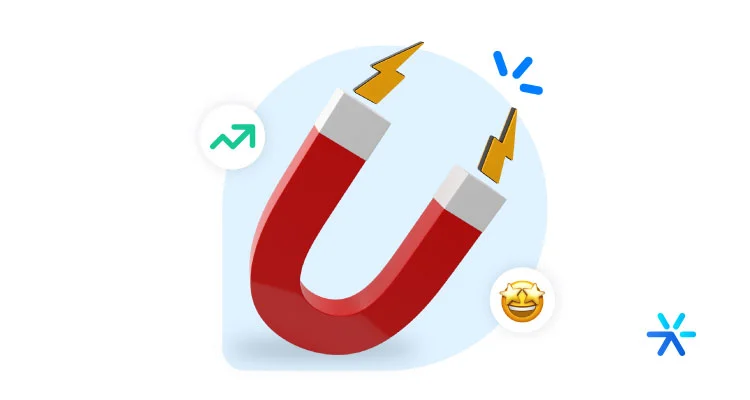
The marketing funnel contains the sales funnel, right? But what exactly is it?
Well, a marketing funnel is the visual concept that illustrates the “path” your customer takes from discovering your brand to the point of sale.
The marketing funnel is divided into:
– Top of the Funnel: the moment your prospect has their first interaction with your brand’s content and becomes a lead;
– Middle of the Funnel: the moment you qualify and nurture your lead, learning more about them while showing how to solve their problem;
– Bottom of the Funnel: the moment when the sales funnel begins, and the lead qualification work reaches its peak with the SQL, followed by the sale itself.
The marketing funnel is the guide for content generation and the creation of marketing strategies for most companies today.
With the rise of digital marketing, it became necessary to formalize the working model within this funnel to make it simpler to analyze the performance of each stage.
Today, all major companies with digital products and start-ups operate following this sales funnel. It is considered the universal model for acquiring more customers.
Top of the Funnel: Attracting Visitors and Generating Leads
The digital marketing sales funnel begins with two main concerns: attracting visitors to the brand’s website and converting them into leads.
Here, everyone working in marketing is primarily concerned with bringing more people to your site.
And once they are there, finding strategies to have them leave their contact information. This work is done with the help of:
– Content marketing;
– Blog + SEO strategies (search engine optimization);
– SEM strategies (search engine marketing);
– Creation of rich materials (e-books, infographics, webinars, etc.);
– Social media marketing;
– Social selling.
Among various others. The important thing is to bring more people to a point of contact with your brand and to seek to convert these visitors into leads.
After that comes the second stage:
Middle of the Funnel – Lead Qualification and Nurturing
Once you’ve managed to convert the leads, the second part of the marketing funnel begins.
Note that the name “marketing funnel” is not arbitrary: each stage presents some barriers, with some people progressing and others staying behind.
Each stage needs to be as efficient as possible – while the top needs to bring many visitors and leads, the middle needs to deliver the highest number of qualified leads – MQLs.
At this stage, you’ve already interested the visitors, they’ve left their information, and have shown interest in what you offer.
It’s time to qualify and nurture the lead, with the help of some digital marketing tools:
– More specific materials delivered directly to the email;
– Personalized email marketing campaigns;
– Selected blog articles about the lead’s specific needs;
– Free trials of your product;
Among others specific to your reality. The goal of the middle of the funnel is to deliver MQLs to be worked on by your sales team.
What is an MQL?
At the beginning of the article, I mentioned the term MQL, and I think it’s important to define it to better understand the next stage of the marketing funnel.
This next stage, as we’ve discussed, is the beginning of the sales funnel.
An MQL is a marketing-qualified lead, meaning a lead that has gone through all the initial processes of the marketing funnel and is already qualified.
This next stage, as we have already discussed, is the beginning of the sales funnel
An MQL is a marketing qualified lead, meaning a lead that has gone through all the initial processes of the marketing funnel and is now qualified.
“Qualifying” a lead is the same as having more information about them and their needs. This information includes:
– The region they live in;
– Contact information, such as email and phone number;
– Their occupation;
– Their current needs;
– Their industry (very important for B2B);
– Their income bracket or, in the case of B2B, their budget;
Among other important information. We have two articles that delve deeper into MQL and SQL:
➡️ MQL and SQL: What They Are and How to Classify Your Leads in 2023
➡️ Sales Cycle: What It Is, How to Reduce It, and Close Deals Faster?

What is an Inbound Marketing Funnel?
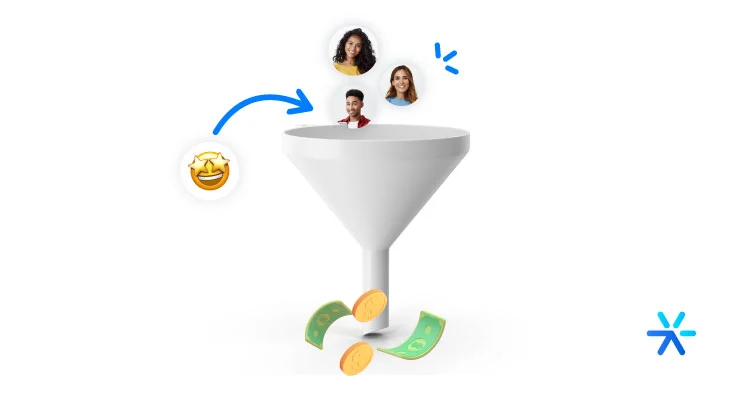
The inbound marketing funnel is the same as the marketing funnel, but without the distinction made at the bottom – what we understand as the sales funnel.
Inbound marketing is a methodology popularized by HubSpot, which in 2013 consolidated the understanding that marketing and sales need to work together.
This collaboration comes through the inbound marketing funnel, which introduces a new term: the consumer journey.
What is the Buying Journey?
The buying journey is a methodology that seeks to understand how people make purchasing decisions online.
This does not involve your brand. Generally, what are the stages that lead to the purchase of a product?
The marketing funnel is related to the stages your company goes through to close new deals.
It’s all a matter of perspective: the buying journey shows your prospect’s view.
So, to illustrate the buying journey, let’s consider an example:
From now on, my name is Robert, and I want to renew my wardrobe by buying only sustainable products.
Nice to meet you. But I need to tell you that I discovered this need from a somewhat complicated situation:
Learning and Discovery
Today was a busy day: I had a very important meeting at the office and grabbed the first shirt I saw. Presentation is what matters, right? Right…?
While presenting to the board, I started noticing what others were noticing. There was a bleach stain on the collar of my shirt. It was wrinkled. And it was sticking to my belly more than I would like.
This isn’t going to work: I need a new wardrobe. I don’t want to go to stores because the pieces have questionable origins. I wanted to shop online from small producers to support the local economy.
But where do I start? Like everyone else, I’ll start with Google. I’ll type “sustainable clothes,” see some brand names, follow them on Instagram, and start my search.
It worked: in two days, I found 10 different brands, all from small producers and made sustainably. Now I know there’s a market for what I need.
No more meetings with wrinkled and tight clothes!
Solution Consideration
Okay, I’ve seen several brands and I need to buy. I decided I’ll start small and then buy more each month.
First: 5 t-shirts, 3 shorts, two pants. But which one should I buy?
The cool thing is that because I followed these brands on Instagram, I’m receiving several ads every day. And depending on the profile I follow, I get more recommendations based on what I like.
It seems like magic, but they say it’s well-executed marketing.
Cool, but now I need to consider which clothes to buy. Which, for me, is a good sign:
– Cheap and fast shipping;
– If it has prints, only if they are original;
– Lightweight and high-quality fabric, preferably cotton;
– Willing to pay more for such a product, but not too much.
Whoever can convince me with these points will get my hard-earned money.
Purchase Decision
I’m quite satisfied. From my initial search, I selected four stores that offer what I need.
Now I’m doing a more in-depth search of these stores to see which one meets all these four points better. And of course: which has the most beautiful clothes.
Something really cool happened in this process. The first store, Beautiful Inc., had a wish list system. I added some items there so that if I decide to buy from them, it would be quicker.
And wouldn’t you know it, I started receiving personalized ads saying that I had a 15% discount on this list?
No other store offered anything similar, so I went ahead and bought from Beautiful Inc.
Recommendation
The product arrived very well, with a perfume and a handwritten note in the packaging.
Now I also receive a weekly newsletter showing the production process of the pieces. It features the designers, the stylist, and even the factory staff. Very cool.
I’m very satisfied. I’ll set aside some money every month to buy more.
I told my wife about the store, and next month we’ll make a larger purchase to avoid paying for shipping. 10/10 recommend every day 🤩
How to Build a Sales and Marketing Funnel from Scratch?
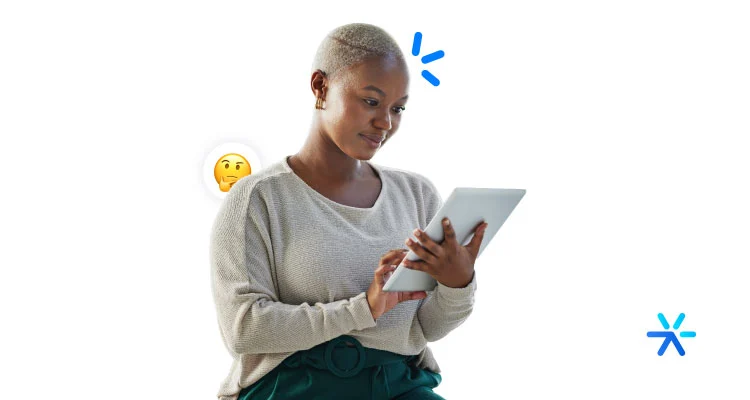
Everything good so far? Just a reminder of what we’ve discussed so far:
– A marketing funnel is the entire commercial structure that creates actions, campaigns, and triggers to attract more people, convert them into leads, qualify those leads, make them ready for sale, and close the deal;
– A sales funnel deals with the final steps of the marketing funnel: it generates SQLs and closes sales;
– An inbound marketing funnel seeks greater interaction between the sales and marketing areas, bringing both concepts into a single funnel with recommendations for both teams. It is also called the consumer journey.
Most of the time, you’ll find these terms being used interchangeably in your professional life.
The differences may seem insignificant, but when applying the concepts, it’s good to know there are divergences in perspective (consumer journey vs. funnel) and also in some methodologies.
So how do you create a sales and marketing funnel that encompasses all these concepts at once? Find out now:
Identifying Channels in the Buying Journey
To get your digital marketing strategy up and running, the first step you need to take is to identify each channel in your customer’s buying journey.
Remember Robert? He gave great clues on how he found his initial list of brands in the consideration stage: he used Google because he didn’t know any brands, and then started using Instagram, visiting profiles and clicking on ads.
In this case, for Robert’s profile, Google was in the learning and discovery stage. And Instagram was in the solution consideration stage.
The thing is, this will vary from customer to customer and, of course, from brand to brand.
Your first task will be to create real personas for your brand, and from them, map out the channels for each stage of the buying journey and the marketing and sales funnel.
Defining Triggers
Remember when Robert said that as soon as he added products to the wish list at Beautiful Inc., he started receiving personalized ads?
This happened because the brand set up personalized ads on Instagram with the help of Facebook’s Pixel – now Meta.
Notice how this was the main trigger for Robert to make the purchase, leading him to choose Beautiful Inc. when he was in the decision stage.
You need similar triggers that will drive your prospect to advance through the stages of the sales funnel.
Creating Materials
One of the most commonly employed strategies at the top of the sales funnel is content marketing.
But it’s not the only one: as we showed, paid media strategies on social networks and search engine marketing are fundamental at various stages of the sales funnel.
When mapping your sales funnel, it’s important to detail which materials you’ll need: both content and those more focused on conversion.
This is the job of a marketing coordinator, an essential role to keep the strategy running.
This person sends the materials to be developed to an analyst, who then creates briefs and sends them to the creative team.
Analysis and Corrections
When your sales funnel is running, it’s crucial to keep an eye on the key indicators of your success.
For this, you’ll need to establish some KPIs related to your objectives. We have an article showing 30 marketing and sales KPIs to help you.
The idea of the sales funnel, as mentioned at the beginning of the article, is to divide and conquer. Since everything is divided into stages, you have a more granular view of what is working and what isn’t.
9 Tools for Sales Funnels
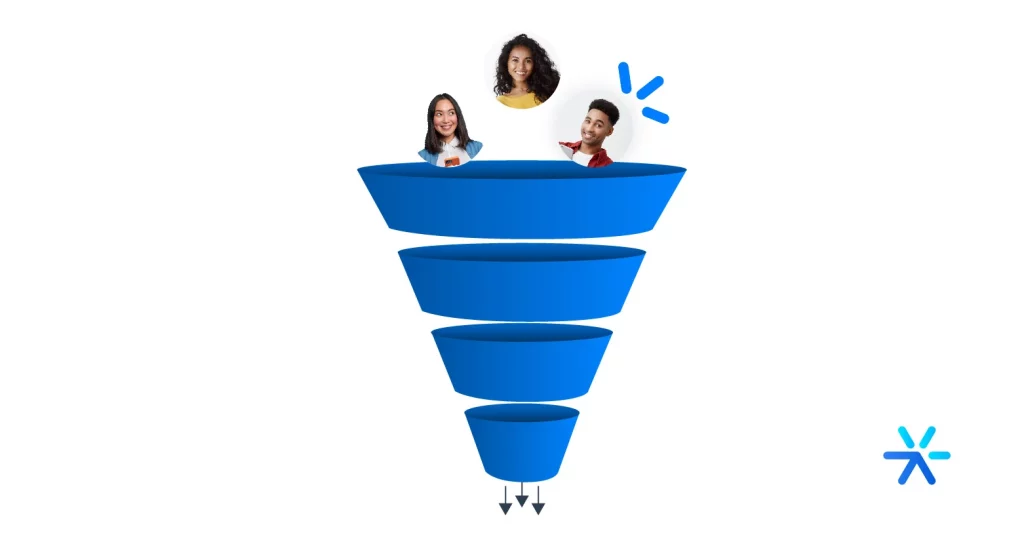
So, did the examples we’ve shown so far help you understand what a sales funnel is, its importance, and how it works in practice?
I hope so! At the end of this article, I’ll show you 6 tools that will help you in various stages of the sales funnel, each with a different specialty.
We’re talking about tools that help you plan, design, and formalize the funnel, put it into operation, and monitor it.
A note: most of them are paid. But I’ve also included a free resource:
Google Analytics
Google Analytics will be your best friend at the top of the funnel, but it’s not limited to just this stage.
At the top of the funnel, Google Analytics shows how much traffic your pages are receiving, a crucial piece of information for anyone working with content marketing.
For those using Google Ads, there are related functionalities in Analytics, such as campaign performance, etc.
We have an article that explains a lot about Google Analytics 4, the current version. We show you how to install and start using it; it’s a must-read.
Leadster
You need a lead generation engine on your site. And this engine has a name: chatbot.
Leadster’s chatbot has proven to generate up to 3x more conversions on your site, greatly assisting you in feeding your sales funnel.
A chatbot is always online and on all your pages. You can offer personalized materials, according to the pages being read and the profile of your visitor.
And all with a humanized language, far beyond outdated forms on landing pages.
🔎 Also read: 4 Proven Ideas to Increase Your Website Conversion with Chatbots
RD Station
RD Station is the marketing platform from Resultados Digitais and is the most used in Brazil to organize leads, create email automations, and make your sales funnel happen.
Automations are the main feature of RD. When planning your sales funnel, how will you set up triggers, send automated emails, and everything else?
RD Station handles all of that. For anyone seriously considering setting up an inbound sales funnel, the platform is as necessary as a computer.
Mailchimp
For companies that want to start small, Mailchimp is one of the best email platforms in the world.
The vast majority of companies using a sales funnel work with email marketing in some way or another, especially in the middle of the funnel, during the consideration stage.
With more affordable prices and good functionalities, Mailchimp will help you organize email flows for the various stages of your sales funnel.
Zoho CRM
Zoho CRM is for companies more advanced in their sales funnel, needing to track marketing and sales data simultaneously.
RD Station provides something quite rudimentary concerning sales, so those wanting to implement a complex sales funnel will need the support of Zoho.
It automates sales processes, acting as a partner throughout your relationship with the customer.
Its difference from RD Station lies in automations. Zoho focuses more on sales, while RD is the more comprehensive platform in marketing.
More Recommendations
In addition to the main ones we listed, here’s a larger list with several other honorable mentions worth checking out:
– Agendor – Sales CRM;
– Pipedrive – Sales CRM;
– LAHAR – Marketing automation;
– HubSpot – Marketing automation;
– HeroSpark – Funnel creation and smaller marketing automations.
So, what did you think of this article? Did we make the differences between all the concepts clear?
The sales funnel is a working methodology, so it’s very common for it to undergo changes daily.
The important thing is always to generate results. I have full confidence that by creating your own sales funnel according to the unique characteristics of your company, you’ll be able to generate many leads and sales.
We can help you with these two stages. Our chatbot can convert up to 3x more leads from the first day of installation.
The trial is free and lasts two weeks, no credit card required. Ready to get started today?


